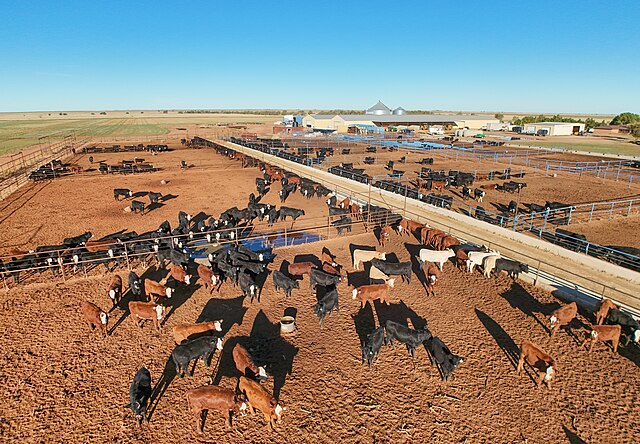The U.S.’ Ag secretary Brooke Rollins has again passed advisory against cattle crossings from Mexico over fresh screwworm larvae cases.
This is happening just a few days after a two-month closure of cattle shipments from Mexico beginning May 11 ended on July 7, 2025.
The Agriculture Secretary on July 9 announced the fresh closure after a herd newly turned positive for New World Screwworm (NWS).
“We are pausing the planned port reopening,” partially read her statement, extending the live cattle, horse and bison import halt.
Concerning the newest ban, secretary Rollins said it was a selective process that targeted certain entry ports.
She added that the USDA must witness extra progress in containing NWS, especially in Mexico’s Veracruz state, before any livestock admittance northward.
Her agency has enjoined farmers to ensure that imported cattle on their farms have undergone inspections at the border.
The turnaround came as a shock after successful diplomacy had briefly coerced the U.S.’ administration to resume the cross-border trade.
Insiders had connected the reopening to efforts by both sides to control screwworm, whose larvae devour open animal flesh.
Beef Pricing in Rollins’ Wake
By extending the livestock import moratorium, it seems like the United States has called its bluff on currently costly beef.
Since Mexico ships about 1 million cows annually to the U.S., as of 2024, any stoppage favors undersupply, with pricing ramifications.
As of May 2025 when the ban was in its maiden month, American ground beef soared in pricing by 16% year-on-year.
Minced beef averaged a record $5.98 a pound in May 2025, per the U.S. Bureau of Labor Statistics.
Will the screwworm threat undermine American beef pricing norm, and will the USDA attain its containment aims as it has done historically? The statistics below explore some of the possible answers to the query.
Statistics on Screwworm Containment
The New World Screwworm (NWS) first got mention in the United States’ Southwest in the early 1930s. By 1933, it widened its reach to the southeast in the Carolina (s), Georgia, Florida, Alabama and Mississippi. Mitigation efforts at the time aimed to educate farmers on keeping cattle wound-free. Civilian corps also rode ranges to ensure no cattle had wounds on them that could attract NWS larvae. By 2024, annual NWS containment efforts by the USDA included awarding ranchers $1 billion in direct benefits and $3.7 billion industry-wide. Between mid-2023 and October 2024, the agency had utilised $54 million out of $109.8 million emergency fund to combat NWS.
Beginning 1954, the United States has been eradicating NWS both at home and regionally. The first eradication program was in Curacao in 1954 while the initial home effort ran 1957-59 in the American southeast. The data below, courtesy of the USDA’s APHIS Veterinary Services, tackles the containment duration by a U.S.’ region or Latin American country:
1960-66: Southwest U.S.
1975: Puerto Rico.
1972-91: Mexico.
1911-95: El Salvador and Honduras.
1995-2000: Cost Rica.
2016 and beyond: Southeast U.S.
How many times has the U.S. detected NWS?
Over the course of three decades ending 2016, the United States had detected NWS 27 times. This tally does not include later detections in the early 2020s in south Texas, via Mexico.
